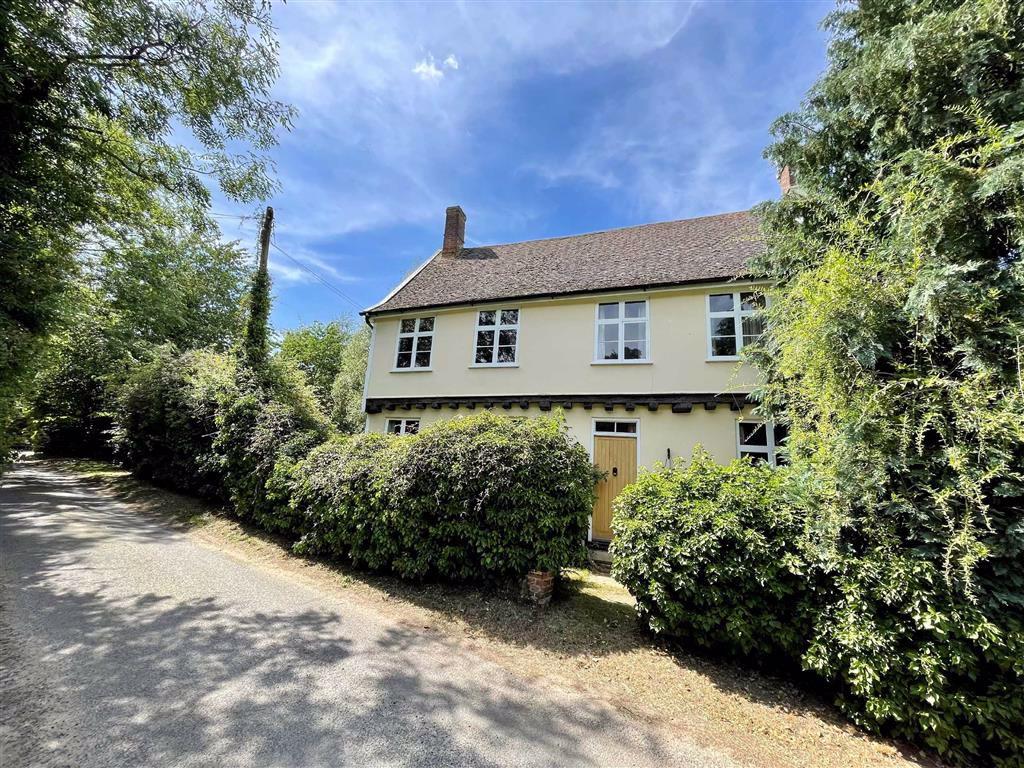Dminer
Member
- Messages
- 4
Hi all,
Firstly ill apologise for asking a question that can not be answered in true fashion and im sure you may have had similar questions previously.
We are currently in the process of relocating from the south east of England to (hopefully) the Norfolk/Suffolk border, with this, we very much like the idea of a period property in a rural location and we are not by any means shy of buying a property that needs some love.
We have found a C16 Manor house which appears it would have originally been a 3 cell open hall but of course has had centuries of additions and adaptions.. most interestingly it has some incredible renaissance style carvings on the main structural timbers on the interior as well as original mullion windows which are incredibly beautiful.
Unfortunately, the previous owners decided to give the property a new lease of life during the 70's and this sadly meant cement based render on all four elevations. At first glance you can clearly see hairline cracks along the joints of the timbers that lay hidden beneath, desperately asking to be set free and allowed to breath!
My question is, after circa 30 years, how far gone are the timbers likely to be... are we biting off more than we can chew here?
We both love the idea of saving a piece of true English heritage and doing our bit to ensure this place stays standing for another 100+ years but with finances being a finite resource we also need to be realistic.
The property also needs a kitchen and bathroom, luckily we can put a rough estimate on such works, what may be exposed once the render is removed is what has me questioning our sanity and if this is at all realistic.
We would very much appreciate the point of view from any members here who may have had a similar experience, I can of course provide plenty of pictures but the fact we have not formally made and had an offer accepted I am somewhat hesitant to publicly post photos of a property still listed on the open market for the vendors sake.
Many thanks
Firstly ill apologise for asking a question that can not be answered in true fashion and im sure you may have had similar questions previously.
We are currently in the process of relocating from the south east of England to (hopefully) the Norfolk/Suffolk border, with this, we very much like the idea of a period property in a rural location and we are not by any means shy of buying a property that needs some love.
We have found a C16 Manor house which appears it would have originally been a 3 cell open hall but of course has had centuries of additions and adaptions.. most interestingly it has some incredible renaissance style carvings on the main structural timbers on the interior as well as original mullion windows which are incredibly beautiful.
Unfortunately, the previous owners decided to give the property a new lease of life during the 70's and this sadly meant cement based render on all four elevations. At first glance you can clearly see hairline cracks along the joints of the timbers that lay hidden beneath, desperately asking to be set free and allowed to breath!
My question is, after circa 30 years, how far gone are the timbers likely to be... are we biting off more than we can chew here?
We both love the idea of saving a piece of true English heritage and doing our bit to ensure this place stays standing for another 100+ years but with finances being a finite resource we also need to be realistic.
The property also needs a kitchen and bathroom, luckily we can put a rough estimate on such works, what may be exposed once the render is removed is what has me questioning our sanity and if this is at all realistic.
We would very much appreciate the point of view from any members here who may have had a similar experience, I can of course provide plenty of pictures but the fact we have not formally made and had an offer accepted I am somewhat hesitant to publicly post photos of a property still listed on the open market for the vendors sake.
Many thanks





